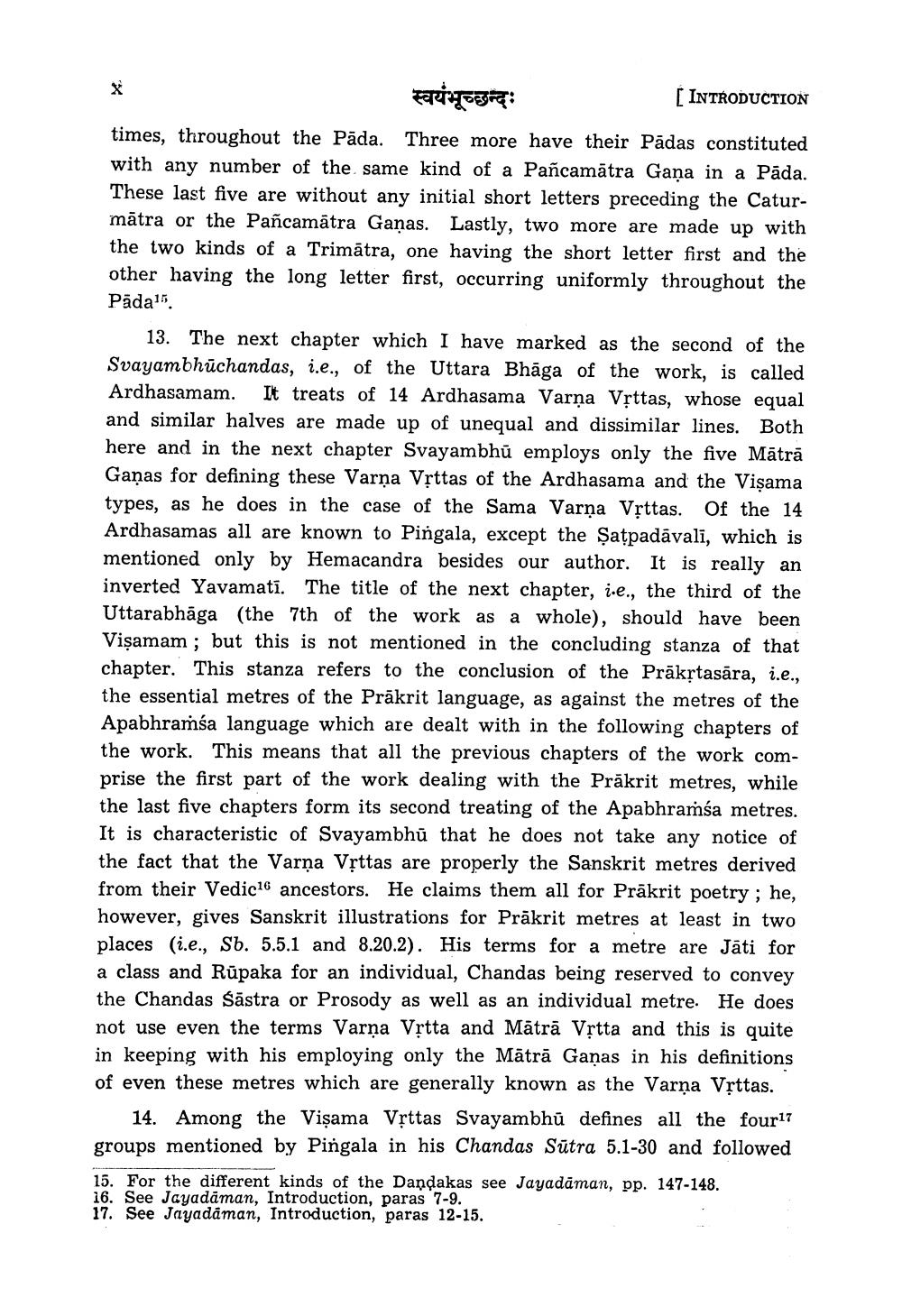________________
स्वयंभूच्छन्दः
[INTRODUCTION
times, throughout the Päda. Three more have their Pādas constituted with any number of the same kind of a Pañcamātra Gana in a Pāda. These last five are without any initial short letters preceding the Caturmatra or the Pañcamātra Ganas. Lastly, two more are made up with the two kinds of a Trimätra, one having the short letter first and the other having the long letter first, occurring uniformly throughout the Päda15.
X
13. The next chapter which I have marked as the second of the Svayambhuchandas, i.e., of the Uttara Bhaga of the work, is called Ardhasamam. It treats of 14 Ardhasama Varna Vṛttas, whose equal and similar halves are made up of unequal and dissimilar lines. Both here and in the next chapter Svayambhu employs only the five Mātrā Gaņas for defining these Varna Vṛttas of the Ardhasama and the Visama types, as he does in the case of the Sama Varna Vṛttas. Of the 14 Ardhasamas all are known to Pingala, except the Satpadávali, which is mentioned only by Hemacandra besides our author. It is really an inverted Yavamati. The title of the next chapter, i.e., the third of the Uttarabhāga (the 7th of the work as a whole), should have been Vişamam; but this is not mentioned in the concluding stanza of that chapter. This stanza refers to the conclusion of the Prākṛtasara, i.e., the essential metres of the Prakrit language, as against the metres of the Apabhramśa language which are dealt with in the following chapters of the work. This means that all the previous chapters of the work comprise the first part of the work dealing with the Prakrit metres, while the last five chapters form its second treating of the Apabhramśa metres. It is characteristic of Svayambhu that he does not take any notice of the fact that the Varna Vṛttas are properly the Sanskrit metres derived from their Vedic 16 ancestors. He claims them all for Prakrit poetry; he, however, gives Sanskrit illustrations for Prakrit metres at least in two places (i.e., Sb. 5.5.1 and 8.20.2). His terms for a metre are Jati for a class and Rupaka for an individual, Chandas being reserved to convey the Chandas Sastra or Prosody as well as an individual metre. He does not use even the terms Varna Vṛtta and Mātrā Vṛtta and this is quite in keeping with his employing only the Mātrā Gaņas in his definitions of even these metres which are generally known as the Varna Vṛttas.
14. Among the Viṣama Vṛttas Svayambhu defines all the four17 groups mentioned by Pingala in his Chandas Sūtra 5.1-30 and followed
15. For the different kinds of the Dandakas see Jayadaman, pp. 147-148. 16. See Jayadaman, Introduction, paras 7-9.
17. See Jayadaman, Introduction, paras 12-15.




